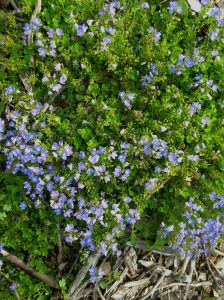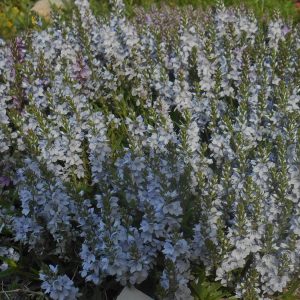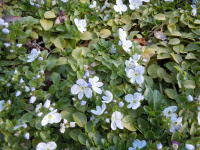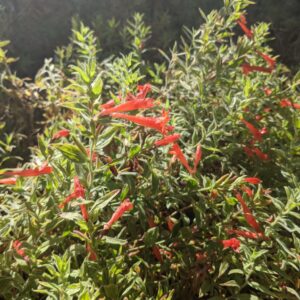Alpine, Rock, Miniature, Bonsai and Railroad Gardens
Showing 89–92 of 92 results
-
Veronica liwanensis Turkish speedwell Z 4-8
Tiny true blue saucers smother the ground
OUT OF STOCK
Tiny true blue saucers smother the ground in May & June – groundcover, front of border or rock garden plant.
Size: 1” x 18” spreader over time
Care: sun to part shade in moist well-drained to well-drained soil
Native: NE Anatolia, Caucasus
Wildlife Value: attracts butterflies
Awards: 1997 Plant Select Winner.Collected before 1849.
-
Veronica prostrata syn. V. rupestris Sprawling speedwell, Harebell speedwelll Z 4-8
From midspring to midsummer short blue spikes above prostrate foliage.
OUT OF STOCK
From midspring to midsummer short blue spikes above prostrate foliage.
Size: 6” x 18”spreads
Care: sun to part shade in moist well-drained soil.
Native: Europe
Wildlife Value: Deer and rabbit resistant.
Awards: Royal Horticultural Society Award of Garden Merit.In gardens since at least 1753 (Linnaeus). Bloomed for 4 or more months in rock garden at Edinburgh Botanic Garden (The Garden, Jan. 1876.)
-
Veronica repens Creeping speedwell Z 5-9
Palest of blue blooms in spring
OUT OF STOCK
Palest of blue blooms in spring on this low, creeping groundcover.
Size: 2” x 8-12”
Care: full sun to part shade in moist to moist well-drained soil
Native: CorsicaAccording to Christian tradition, as Jesus carried the cross to Calvary a woman wiped his face with her handkerchief, leaving the imprint of Christ’s features, the vera iconica, meaning “the true likeness.” When the Catholic Church canonized the woman the Church named her Saint Veronica. Medieval gardeners named the plant after her due to a perceived likeness of the flower to her handkerchief. This species collected by 1800. According to William Robinson, father of the mixed perennial garden, Veronica repens “clothes the soil with a soft carpet of bright green foliage, covered in spring with pale bluish flowers.”
-
Zauschneria garetii syn Epilobium canum ssp. garrettii Hummingbird trumpet, California fuchsia, Garrett’s Firechalice Z 5-9
Vibrant orange-red tubes in late summer, spreading by root, form a colorful groundcover.
Vibrant orange-red tubes in late summer, spreading by root, form a colorful groundcover.
Size: 12” x 18-24”
Care: sun to part shade in well-drained soil
Native: Kingston Mountains in CA, Utah, Idaho & Wyoming
Wildlife Value: Attracts hummingbirds, birds and butterflies, Deer and rabbit resistantCollected in Utah’s Big Cottonweed Canyon in 1906 by A.O. Garrett (1870-1948), prolific Utah planthunter.




